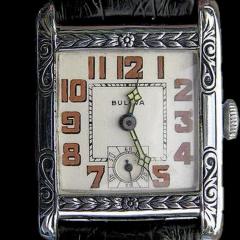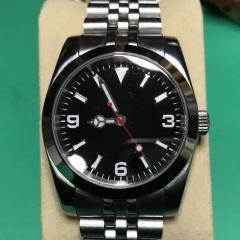Lathe Belts and Oiling
-
Recently Browsing
- No registered users viewing this page.
-
Topics
-
Posts
-
Yep…This makes perfect sense. With that large a gap in the serial numbers, they were almost certainly machined on different equipment, hence one should have no expectation of any cross-batch compatibility. I’ll revert to the original bridge. Regarding bending the bridge @nevenbekriev, I’ll give it a try, but I may have to buy some better calipers. My Vernier calipers are only accurate to 0.1mm. Not very accurate.
-
By nevenbekriev · Posted
Yes, what I wanted to say is that the cock is part of the main plate, manufactured together with it and not meant to be interchangeable. Even if the other cock gets in place, it is not sure that the balance then will stay upright. You should use the original cock when it exists and is not destroyed. The adjustment needed by bending it is not irreversible. It is minimal deforming that is needed. No tools are needed. I have pointed to all needed references here for the balance staff endshake checking and correctness confirmation. The only tool needed for the correction is You thumb. The cock must be fixed on the main plate, no need of special plate with holes and so on. If You will feel more confident, then measure with Vernier caliper the height of the top of the cock where the stones are against the main plate bottom when the shim is fitted and try to reach the same height when bending the cock (with no balance in place!!!) Caliper with screw for fixing is perfect. -
Thanks for the reply. I polished the head of the screw using 1500 to 10000 lapping paper and a screw polisher. This is why I think the head blued and the rest of the screw didn't. Silly question, how do you polish the whole screw inc threads, if that's what it needs to blue? 100% clean, Elna red and heated ultrasonic bath + IPA rinse. Finally, there is definitely heat leak as there's about a 30c difference between the brass bed and the soldering station temp. Having said that, the bed temp was stable. I will try to search out a better brass pot, but I haven't found one yet, hence the stainless steel bowl.
-
By RichardHarris123 · Posted
Agreed but that's where WD40 excels, water displacement. -
I would change the container to a thick walled brass one to start with. Looking at you screw pictures they don’t look shiny enough, really it’s best to do a black polish on them before trying. Also make sure once polished they are scrupulously clean, I dunk my experiments in acetone before bluing. i think the thin walled stainless container to leach away the heat from the shavings, most successful bluing videos for example use thick walled brass to hold a good deep amount of shavings which acts as a better holder of heat. Tom
-






Recommended Posts
Join the conversation
You can post now and register later. If you have an account, sign in now to post with your account.
Note: Your post will require moderator approval before it will be visible.